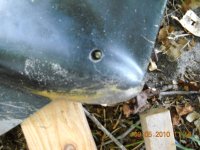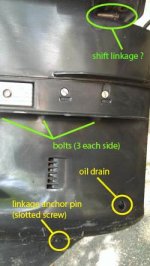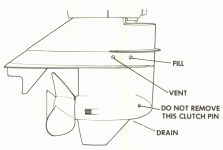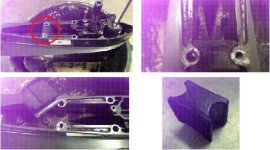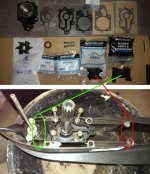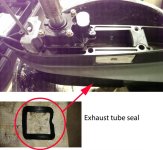Hi,
I just purchased a 1994 Bayliner Capri 1700LS with the stock 1994 Force 120HP outboard (SN 0E093566). The seller told me that the engine was not running, and his mechanic told him that it needed a new powerhead. I looked at the engine, and it seems to be very clean! Actually, overall, the boat is in immaculate condition, and I have all the paperwork including the original brochure, manuals, etc.
I am new to outboards, but have rebuilt small British engines way back when, so I am pretty mechanically inclined. I first want to manually turn the flywheel to see if the engine is locked up. But, I have read that some outboards have CW rotation, and I couldn't find any information on the '94 Force. I looked at some videos online and it seems to be that the flywheel rotates CW. From reading some online forums, I guess that I can do some damage to the water pump if I turn in the wrong direction. If I can turn the flywheel, then I will proceed to compression testing.
Does the '94 Force 120 flywheel rotate CW or CCW?
TIA,
Chandran
I just purchased a 1994 Bayliner Capri 1700LS with the stock 1994 Force 120HP outboard (SN 0E093566). The seller told me that the engine was not running, and his mechanic told him that it needed a new powerhead. I looked at the engine, and it seems to be very clean! Actually, overall, the boat is in immaculate condition, and I have all the paperwork including the original brochure, manuals, etc.
I am new to outboards, but have rebuilt small British engines way back when, so I am pretty mechanically inclined. I first want to manually turn the flywheel to see if the engine is locked up. But, I have read that some outboards have CW rotation, and I couldn't find any information on the '94 Force. I looked at some videos online and it seems to be that the flywheel rotates CW. From reading some online forums, I guess that I can do some damage to the water pump if I turn in the wrong direction. If I can turn the flywheel, then I will proceed to compression testing.
Does the '94 Force 120 flywheel rotate CW or CCW?
TIA,
Chandran


